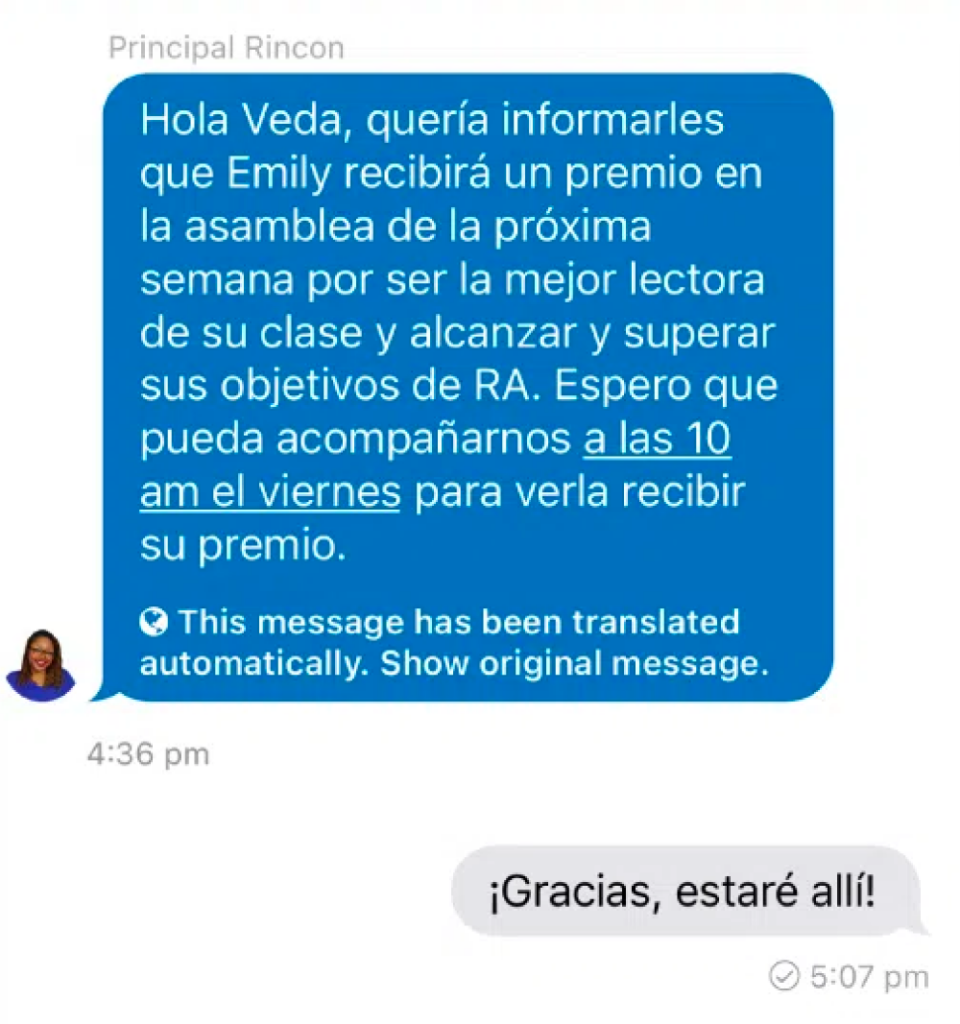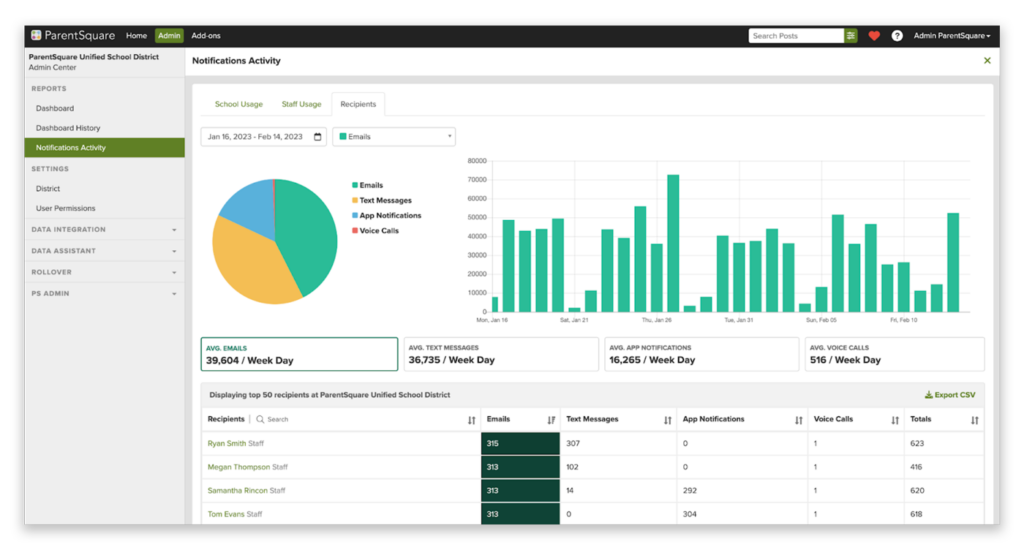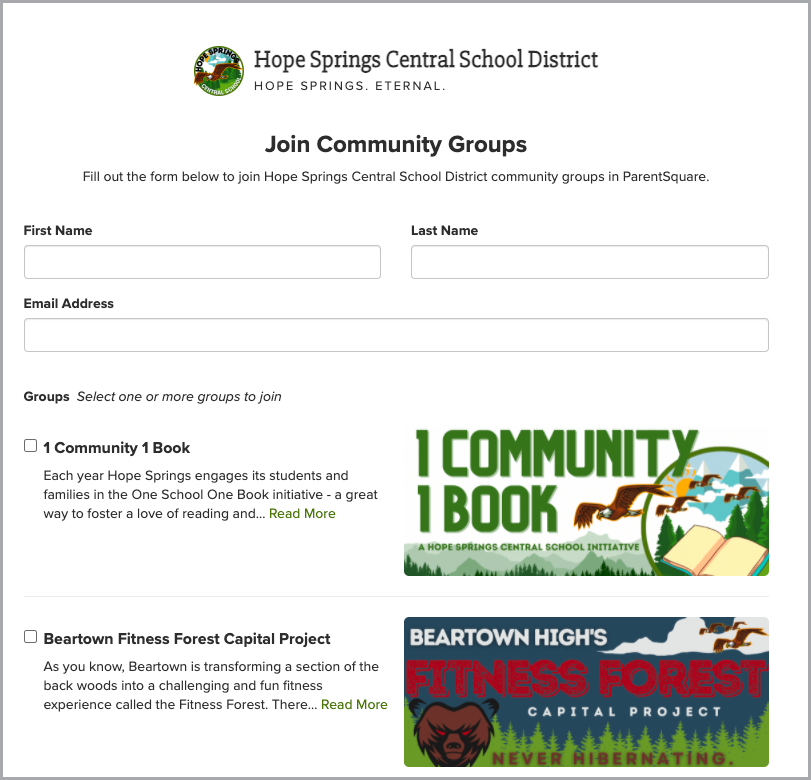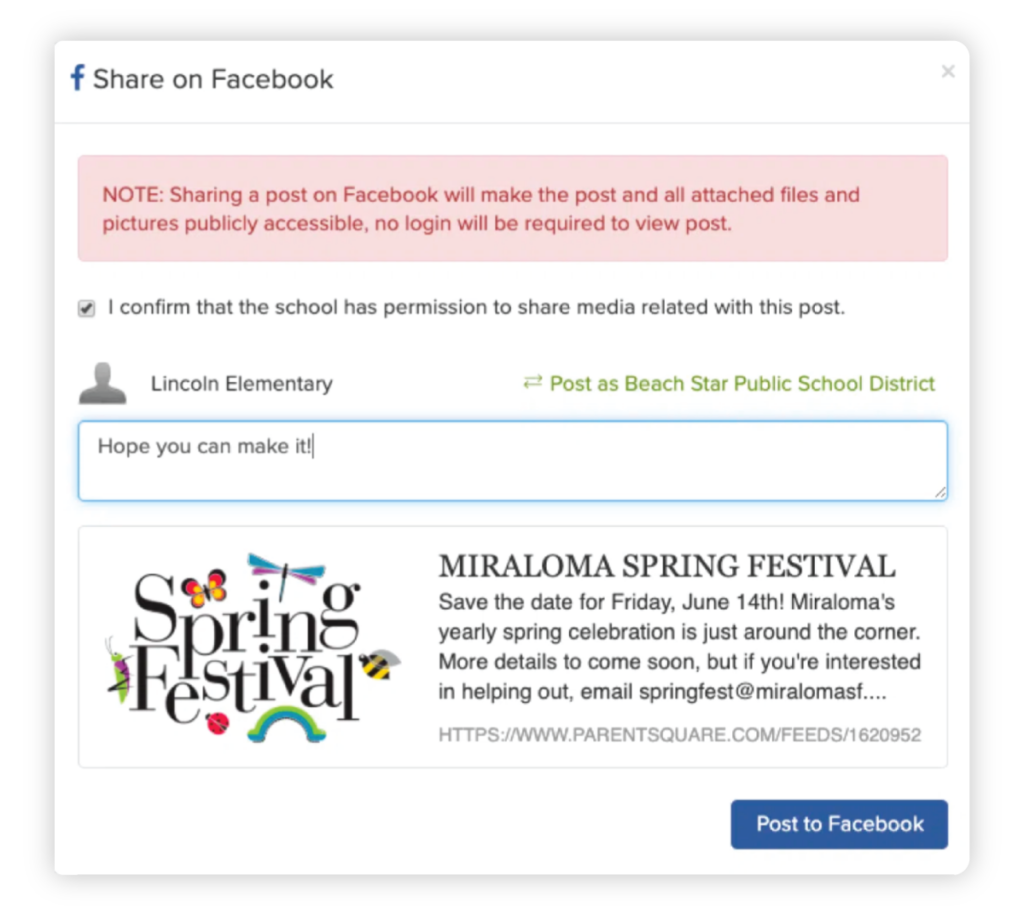
Family engagement in schools is a two-way collaborative process between families and schools that begins in early childhood education and continues through high school. In today’s fast-paced world, fostering strong partnerships between schools and families is crucial for the holistic development and academic success of students. When families actively engage in a child’s education, it creates a powerful support network that enhances the overall educational experience. In fact, family engagement is one of the best predictors of student success.
Let’s begin by identifying some common barriers that may be preventing your school families from truly being involved in their child’s education. Then we will provide multiple strategies you can implement to achieve family engagement success.
Common Barriers for Family Engagement in Schools
Family engagement in schools can be influenced by various barriers that hinder effective collaboration and communication between families and educational institutions. Some common barriers include:
- Insufficient communication channels and ineffective methods of reaching out to families can hinder engagement.
- Language barriers and cultural differences can impede effective communication and understanding between families and schools.
![]() ParentSquare recognizes the importance of inclusivity and offers language translation features. Families who are non-native English speakers can select their preferred language for messages and updates, fostering better understanding and engagement. Real-time translation is also available with our messaging feature, meaning teachers can create a message in English and it is sent to the parent/guardian in their chosen language. When they respond in their chosen language, it is translated into English for the teacher.
ParentSquare recognizes the importance of inclusivity and offers language translation features. Families who are non-native English speakers can select their preferred language for messages and updates, fostering better understanding and engagement. Real-time translation is also available with our messaging feature, meaning teachers can create a message in English and it is sent to the parent/guardian in their chosen language. When they respond in their chosen language, it is translated into English for the teacher.
- Families may face time constraints due to work commitments, multiple jobs, or other responsibilities, making it challenging to actively engage with schools.
- Lack of resources, such as transportation or internet access, can also hinder participation in school events or accessing information.
- Families who have had negative experiences with the education system in the past, such as feeling unheard or disrespected, may be reluctant to engage with schools.
- Families experiencing financial difficulties or living in low-income communities may face additional challenges when it comes to engaging with schools.
- Limited knowledge about school policies, procedures and available resources can hinder their involvement.
- A school’s culture and policies can either promote or hinder family engagement.
- Disparities in educational opportunities and outcomes can contribute to the disengagement of marginalized families.
- Not having accurate contact information for parents and guardians will greatly impact your ability to provide important services and information.
![]() Additionally, some school communication systems lack the ability to track, measure and report family engagement data. With ParentSquare, you can easily measure and improve engagement with visual reports on parent reach, participation and engagement. Reach—and maintain—contactability with 100% of your student families, track parent interaction levels across your district or by school, and get the insights you need to continuously improve your efforts.
Additionally, some school communication systems lack the ability to track, measure and report family engagement data. With ParentSquare, you can easily measure and improve engagement with visual reports on parent reach, participation and engagement. Reach—and maintain—contactability with 100% of your student families, track parent interaction levels across your district or by school, and get the insights you need to continuously improve your efforts.
Addressing these barriers requires proactive efforts from schools. Collaborative approaches that take into account diverse perspectives and empower families can help overcome these barriers and promote meaningful family engagement in schools.
6 Effective Strategies for Family Engagement Success
In this part of the blog, we will explore five effective strategies that schools can implement to promote family engagement, thereby creating a positive and enriching learning environment for all.
1. Establish open lines of communication
Clear and consistent communication is the foundation of effective engagement. Schools should adopt multiple communication channels to ensure families stay informed and connected. Utilize newsletters, email updates, school websites and social media platforms to share important information, such as upcoming events, student achievements and policy changes. Regular parent-teacher conferences, open houses and family education workshops also provide opportunities for face-to-face interactions, allowing for better understanding and collaboration.
![]() ParentSquare makes communication easy for schools and districts, as well as the families they are interacting with. It allows for mass notifications via phone, text and email, but also streamlines all two-way communications for teachers and principals. Teachers can send photos and videos, permission slips, and parent-teacher conferences scheduling. Principals can send newsletters and coaches can send team messages. With one click, administrators can create a message once and share it on multiple communication channels.
ParentSquare makes communication easy for schools and districts, as well as the families they are interacting with. It allows for mass notifications via phone, text and email, but also streamlines all two-way communications for teachers and principals. Teachers can send photos and videos, permission slips, and parent-teacher conferences scheduling. Principals can send newsletters and coaches can send team messages. With one click, administrators can create a message once and share it on multiple communication channels.
2. Encourage family involvement
Parents and guardians play a vital role in their child’s education, and schools should actively encourage their involvement. Develop a welcoming atmosphere where families feel comfortable and valued. Create volunteer programs, parent-teacher associations, or advisory committees that give parents and guardians a voice in decision-making processes. Provide opportunities for families to contribute their expertise or interests, such as leading workshops, mentoring students, or participating in career days. Celebrate and acknowledge parental involvement to reinforce its importance within the school community.
![]() Have you always wanted to simplify conference sign-ups, volunteer requests and event RSVPs? These can all be done from within ParentSquare and staff members can easily add participation options to any post, including options to request RSVPs for events, ask for project supplies, recruit volunteers and more. Teachers can also set up parent-teacher conference sign ups in under a minute and provide parents with a seamless sign-up process and helpful auto reminders.
Have you always wanted to simplify conference sign-ups, volunteer requests and event RSVPs? These can all be done from within ParentSquare and staff members can easily add participation options to any post, including options to request RSVPs for events, ask for project supplies, recruit volunteers and more. Teachers can also set up parent-teacher conference sign ups in under a minute and provide parents with a seamless sign-up process and helpful auto reminders.
3. Embrace cultural diversity
Schools today serve diverse populations, and understanding and appreciating different cultures is essential for fostering inclusive and equitable engagement. Organize multicultural events, workshops, or heritage celebrations that showcase the rich diversity within the school community. Encourage families to share their cultural traditions, languages and customs, creating a sense of pride and belonging. By embracing cultural diversity, schools can promote mutual respect, understanding and collaboration among all stakeholders.
4. Collaborate with community organizations
Engaging community organizations and local businesses can expand the resources available to families and create valuable learning opportunities beyond the classroom. Reach out to community centers, libraries, museums and local businesses to explore partnerships and develop programs that benefit families. This could involve internships and job shadowing for students, guest speakers opportunities for family members, or joint projects families can complete together. By involving community organizations, schools demonstrate their commitment to preparing students for real-world experiences and fostering connections that extend beyond the school walls. These partnerships can also make connecting families to community resources easier.
![]() ParentSquare’s Community Groups allow districts and schools to send out communications to interested community members. With this feature, family and community members who are not parents, guardians, students, or staff can sign up for communications – saving staff time by having all contacts and messages in one place within ParentSquare.
ParentSquare’s Community Groups allow districts and schools to send out communications to interested community members. With this feature, family and community members who are not parents, guardians, students, or staff can sign up for communications – saving staff time by having all contacts and messages in one place within ParentSquare.
5. Hit the communication sweet spot
There is a delicate balance between too little information and too much information. Families often tell us they are overwhelmed by the number of places they need to go to find information as well as the number of communications they receive in a day for their child. Spend some time listening to your stakeholders to find out what level of communication they want. Then, work with your staff and administrators to find the right combination of classroom, school and district communications so families don’t feel like they are drowning in school communications. This blend of communications will look different for each community, so we suggest conducting polls or surveys to find out what your staff and families want.
6. Utilize technology
Harnessing technology can enhance engagement by providing convenient and accessible communication platforms. Develop online portals or mobile applications that allow families to access information, track their child’s progress and communicate with teachers. Utilize video conferencing tools for virtual parent-teacher meetings or webinars to reach a broader audience. Engaging with families and the community through social media platforms also provides an avenue for sharing success stories, highlighting events, and promoting school initiatives.
![]() Communication and messages within ParentSquare reach parents and guardians where they want to be met. Whether it’s via the desktop or mobile app versions, social media posts, or through the school’s website – there are many ways to reach families with current information and alerts. With ParentSquare, admins can share interesting and relevant ParentSquare posts to social media with a click, as well as keep the website up-to-date with dynamic content. Using a single platform that performs many functions allows parents and guardians to have one place to find information, making communication more effective.
Communication and messages within ParentSquare reach parents and guardians where they want to be met. Whether it’s via the desktop or mobile app versions, social media posts, or through the school’s website – there are many ways to reach families with current information and alerts. With ParentSquare, admins can share interesting and relevant ParentSquare posts to social media with a click, as well as keep the website up-to-date with dynamic content. Using a single platform that performs many functions allows parents and guardians to have one place to find information, making communication more effective.
When schools prioritize family and community engagement, the positive impact on students’ educational journey is immeasurable. By implementing these effective strategies, schools can create a thriving ecosystem where everyone contributes to the success and well-being of students.
ParentSquare is here to help you build strong partnerships that empower your students and foster lifelong learners within your communities. Learn more about these features and many more by booking a demo today!












